Published in the Ocean Watch column, Honolulu Star-Advertiser © Susan Scott
Friday, September 5, 2008
ENSENADA, Mexico » Last month I flew to Australia to prepare my sailboat, Honu, for the long voyage to Mexico.
But neither she nor I went sailing. The boat made the approximately 7,000-mile upwind journey on the deck of a ship, and I did it in airplanes.
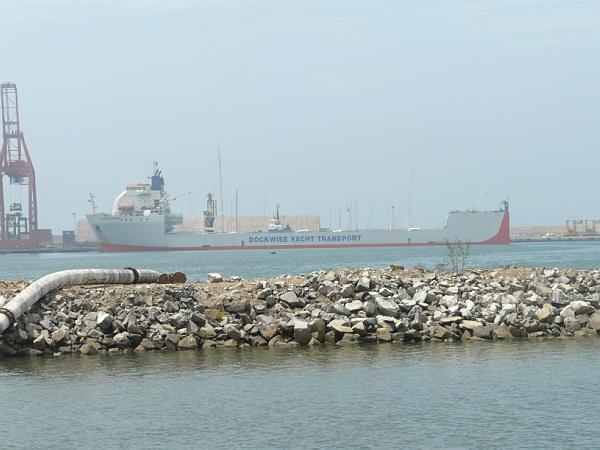
Honu and I arrived in Ensenada last week, the boat in good shape and me in high spirits. Besides being thrilled over getting the boat to Mexico while I lounged around Hawaii, I’m thrilled over Ensenada Harbor. The minute I got here, it called my name.
When I was planning this unusual adventure, people asked me how I would get my 37-foot sailboat onto the deck of a ship. The answer, and the task, was easy: I drove it on.
The need to haul boats to ports around the world is a common one and ships are built specially for it. It works like a lock. The ship has an enormous low, flat deck surrounded by walls. When all the little boats (and they all look little next to this giant) are ready to board, the ship’s two massive aft doors open and the ship takes water into its ballast tanks.
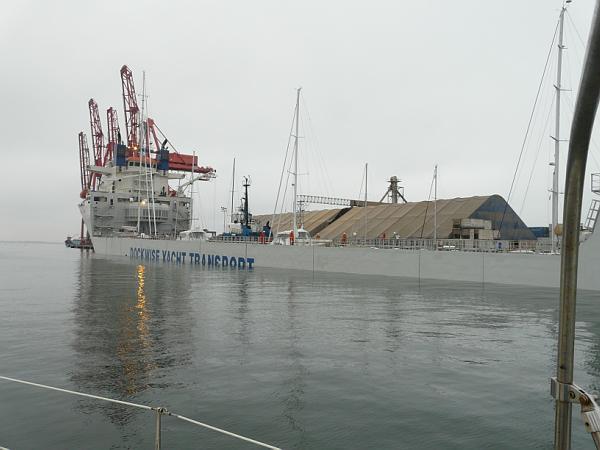
When the deck is sufficiently underwater, you drive in. Divers secure the boat beneath, and when the deck is dry again, workers weld supports in place.
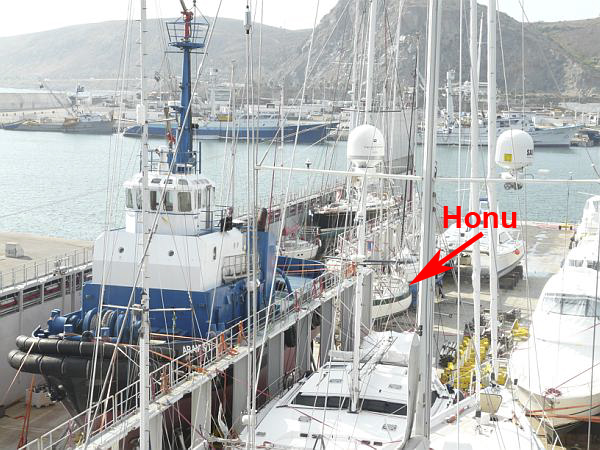
At the boat’s destination, the procedure is reversed, and you drive it off. For those interested, the shipping company offers a fine two-minute animation of the procedure at www.yacht-transport.com/howdoesitwork.
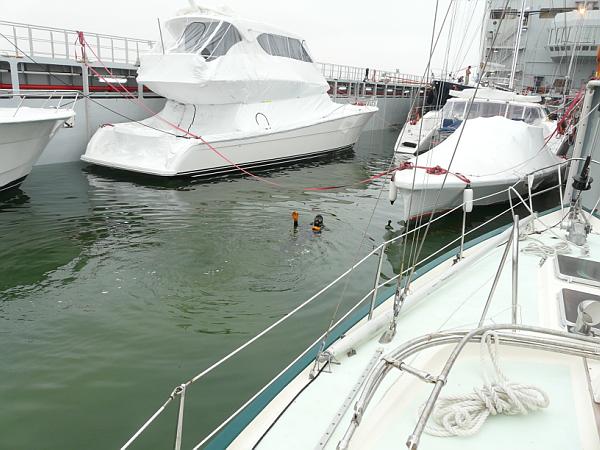
Diver signals it’s OK to go.
My worry in all this was that I’d get nervous, drive poorly and embarrass myself. But I did it right and now Honu and I are in Mexican waters.
And what waters they are. Ensenada is the main port of Mexico’s Baja Peninsula, an 800-mile-long spit of land famous for its desert beauty and coastal marine life. Gray and humpback whales come here in winter to mate and bear their young. Others such as blue, killer and fin whales also hang out with migrating rays, leaping mantas and fish galore.
It’s hurricane season right now, though, and no one is sailing south. That’s OK with me. I’m happy right where I am.
I arrived here at night, checked into my hotel on the harbor and opened the lanai doors. “ONK, ONK, ONK,” I heard from the dark water. Those honking barks could mean only one thing. The next day, I went down to meet my neighbors, a bunch of California sea lions.
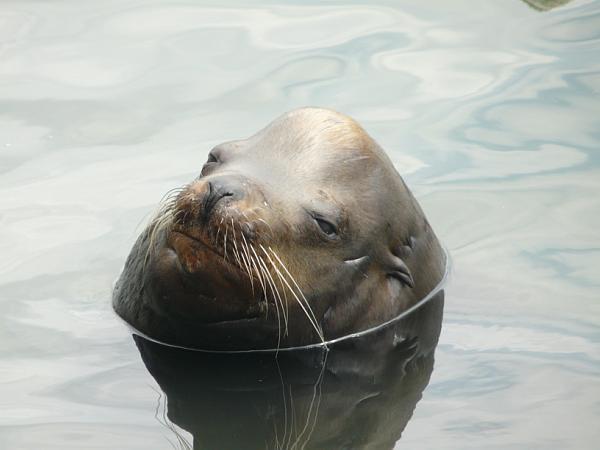
This species ranges from Canada’s Vancouver Island to the tip of Baja, Mexico, with population estimates around 200,000 and growing. The individuals in Ensenada right now are bulls that know a good thing when they see it: fishing boats.
It’s common to see these 2,000-pound-bulls rushing toward the guts and leftovers anglers and shopkeepers throw to the brown pelicans. (Yes, I’m reciting pelican poems again.) Among pelicans, this species is unusual in that it’s exclusively marine and plunge dives for fish.
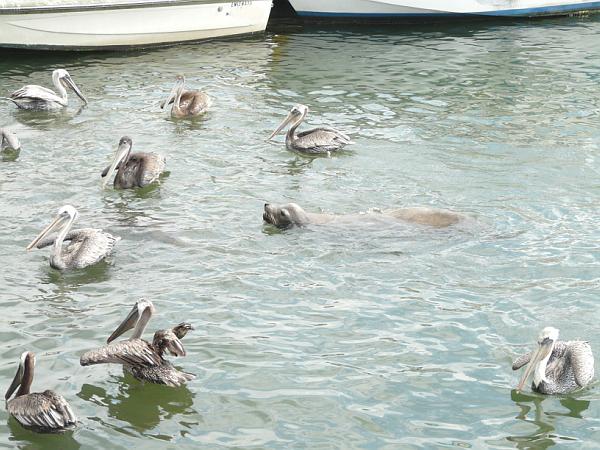
The birds don’t have much chance of getting a free fish when the pushy sea lions come charging over, but the smart ones have a system. The pelicans hop up on the steeply inclined rocks and open their huge beaks near the hands that hold the fish.
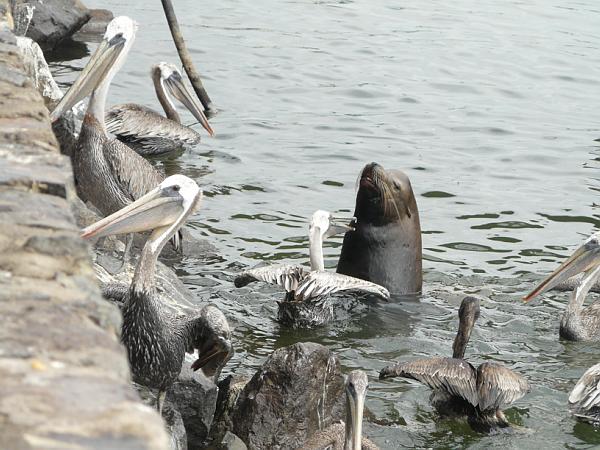
The sea lions and fish-eating birds, including great blue herons and gulls, have entertained me endlessly since I’ve been here in Ensenada.
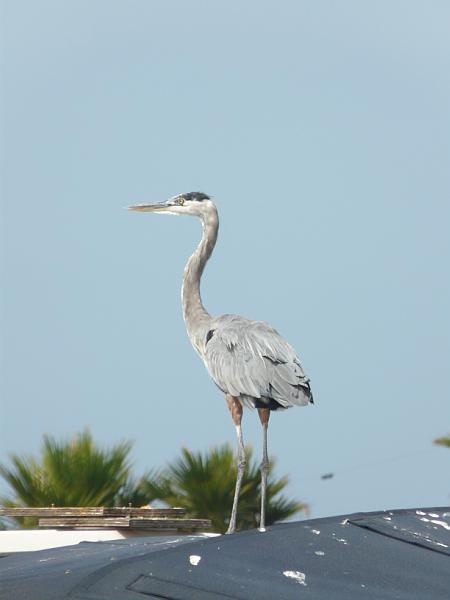
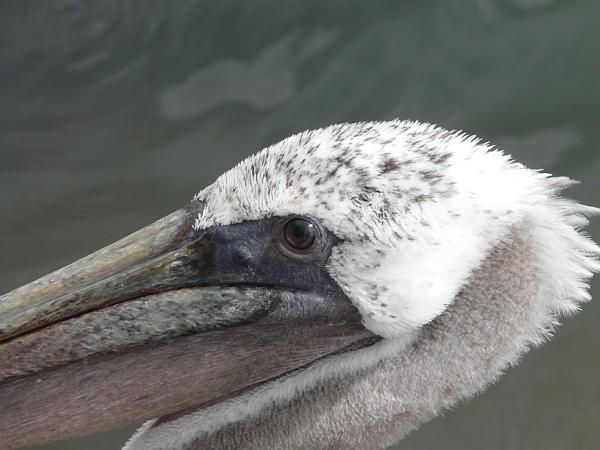
Imagine how much fun I’ll have when I actually leave my slip.
All photos by Susan Scott.